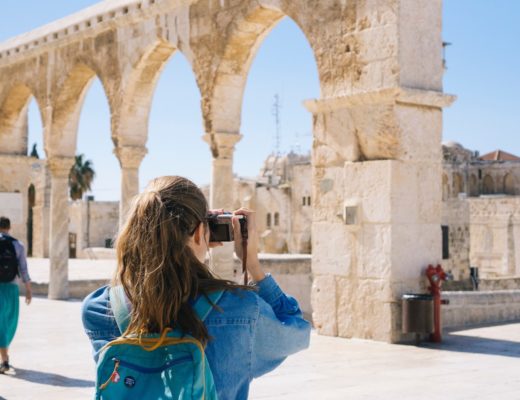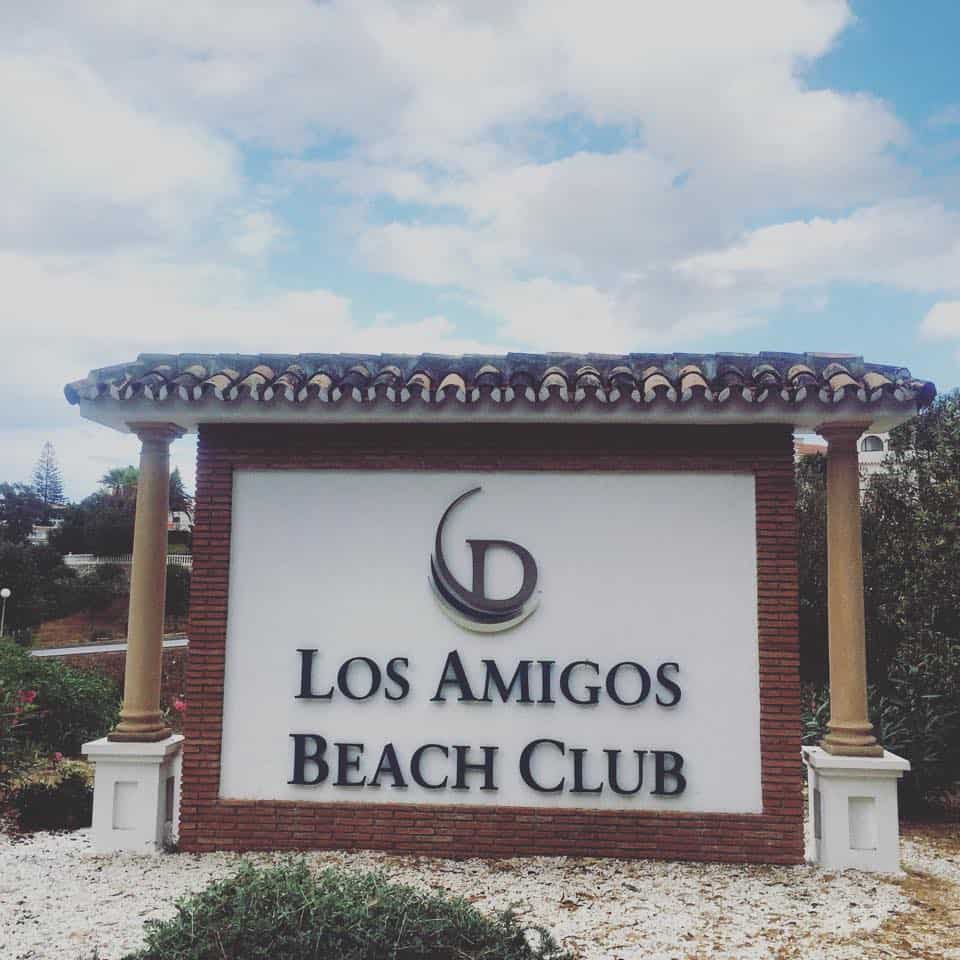Last month I spent four days in Iceland sightseeing some of the islands most popular tourist attractions. Iceland is a land of wild and untouched landscapes, glaciers, waterfalls and much more, including abandoned planes, aqua blue pools and natural beauties.
For me, a trip to Iceland was on the cards simply from seeing scenes from one of my favourite films Walter Mitty longboarding through Seydisfjordur, I knew I needed to visit ASAP.
In order to help you guys with planning your own trip (after I spent hours and hours researching the best places to go and where to stop), on your Iceland vacation. Here are my favourite things to do in Iceland…
Contents
15 Things to do in Iceland
- Whale watching
- The Blue Lagoon
- Urriðafoss
- Eskifjordur
- Seljalandsfoss
- Gullfoss Waterfall
- Crystal Ice Caves
- Skógafoss
- Viking World
- Geysers
- Kerid Crater Lake
- Dettifoss
- Northern Lights
- Hallgrimskirkja Church
- The Sun Voyager
READ MORE: Planning a trip to Iceland
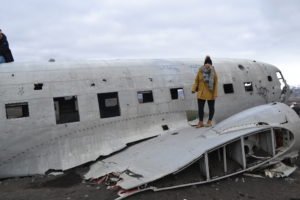
6 Things You Should Know About Iceland
The landscapes are unreal
Iceland isn’t called the land of fire and ice for nothing! Iceland is amazing – at every turn there is another stunning landscape, with countless volcanoes, sprawling glaciers, expansive fjords, raging waterfalls, exploding geysers and the northern lights. Iceland really has it all.
When we visited Iceland we hired a car which gave us the freedom to explore Iceland at our pace and stopping at the tourist spots, as well as the lesser known. We got up early, and we got home late, making sure we got to see as much as we could throughout the day. Our busiest day was a 12-hour road trip to the south where we saw so many different and incredible landscapes.
The weather is unpredictable
We arrived in Iceland on a beautifully sunny afternoon however as the trip went on, and as we explored different areas of the island, the weather changed dramatically. We had rain, ice, snow, sunshine and more – plus everything in between. There were snow capped mountains beside luscious green forests, and black windy beaches, alongside glistening sunlight. Make sure you pack for the unpredictable weather too – you can see what I packed here.
It’s not cheap
Locking down cheap airfares may be a breeze, but the budgeting fun pretty much stops there. Iceland is bloody expensive! Overall we spent around £1,700 for two people for four days. Read my full post on how much money to spend in Iceland here.
Flights to Iceland with WOW Air with hold luggage: £300 / Accommodation for 3 nights at Frost & Fire Hotel in a double deluxe room: £450 (sponsored) / Four-day Geysir Car hire with insurance: £200 / Morning Whale Watching boat trip with Elding: £140 / A few hours at the Blue Lagoon: £150 / Spending money for lunches and dinner: £500 / Totals: £1,740 for four days for two people
It’s not as busy as it seems
Iceland may have a mass of tourists each year, but it doesn’t actually feel that crowded when you’re there.
During the high season, places within about a day’s drive of Reykjavik (especially the south coast) can feel a little like a circus (unless you get up early, have a car and make your own way – then you can more of less beat them to the main hot spots) but the further away you drive, you’ll find yourself on an empty road in the wilderness having not seen another car for hours. We spent a lot of time driving on open roads, exploring major tourist spots with barely any people and spending time in solitude.
Don’t try to see it all
Iceland may look small, but when you factor in stopping at every second bend for those unmissable photo opportunities, an unplanned detour through the black desert to the glacier over there on the horizon, a small walk on said glacier, a lunch break, stopping at every other waterfall, taking it slow along the four-wheel-drive tracks and a much needed tea stop.
Just driving 100 km can take you all day, especially when the sun shows no sign of setting anytime soon. By packing too much into your itinerary you run the risk of spending far too much time in your car rushing from place to place.
Go off the tourist trail
When you travel in a car you get the freedom to go off-piste and it was the best decision we made. If you’re going to Iceland, hire a car and then did our own thing. Considering the Ring Road is the route most tourists follow, getting away from it can be like a breath of fresh air, particularly on the often congested south side of the island. We didn’t go too far beyond the ring road, but by having the car it meant being able to stop off when and where we fancied.
READ MORE: 11 places to visit in Iceland to visit right now
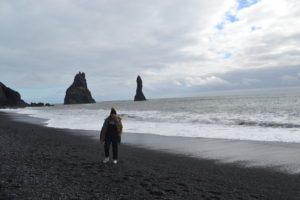
South Iceland
Whales with Elding
On our second day in Iceland, we headed back in to the city for 9am to head out on a boat trip with Elding. We headed out on their classic Whale Watching tour which took 3-4 hours from the harbour. The tour commences at the ticket office in the Old Harbour in downtown Reykjavik where you jump on board a converted fishing vessel permanently placed by the pier, which is where you will meet our crew for the day.
Once on board the tour boat there are several outdoor viewing platforms, a large indoor saloon with an on board café where you can buy light refreshments, basic bathroom facilities and a cloak room where you can borrow one of our blankets or overalls on colder days.
You can either stay outside in the fresh air but you are also welcome to stay inside the heated lounge and observe the views from within, through our large panoramic windows. We grabbed a table on the upper deck (inside) whilst also popping outside throughout the journey when the wind got a bit too much!
Whilst on the tour we managed to see some dolphins and the best bit…. a Minke whale! They are the most abundant, along with White-beaked dolphins, Harbour porpoises and the occasional Humpback whales. Despite not seeing a humpback we were pretty happy with our trip and before long the boat headed back to the harbour.
Prices are adults: 10990 ISK (£77), children (7-15 years ): 5495 ISK (£35), children (0-6 years): 0 ISK.
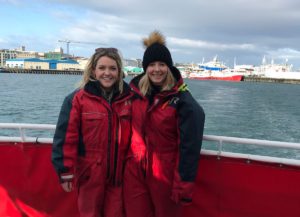
The Blue Lagoon
I go into this further in another blog post, but I couldn’t leave it out of this must-see list either. When me and Katie headed to Iceland last month, we couldn’t bypass the famous Blue Lagoon geothermal spa, one of the most visited attractions in Iceland, and it’s not hard to see why.
The Blue Lagoon is simply a large lake that has the perfect temperature to bathe in, on average it’s 39°C/102°F. It’s supposedly great for your skin, offering soothing waters and rich skin nourishment.
The lagoon’s warm geothermal water and natural active ingredients; mineral salts, silica and blue-green algae help you relax and unwind while the lagoon’s distinctive white silica mud gently cleanses and exfoliates the skin. Read my full post on The Blue Lagoon here.
READ MORE: A night at the Bubble Hotel in Iceland
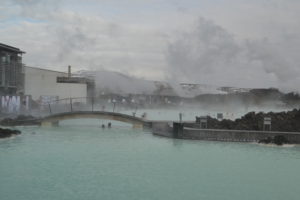
Reykjavik
Don’t be misled by your airport booking, your plane will actually land at Keflavik and then you’ll need to travel 45 minutes to the city from there. Reykjavik, on the coast of Iceland, is the country’s capital and largest city. It’s home to the National and Saga museums, tracing Iceland’s Viking history and much, much more.
We only got to spend a few hours here, and wish we’d had more time! We had lunch at Kaffivagninn, Iceland’s oldest restaurant located in the harbour and visited the Whale Museum, as well as the striking concrete Hallgrimskirkja church.
Urriðafoss
Whether you’re coming from our hotel or Reykjavik, you will begin your journey, coming across a lesser-known waterfall close to our hotel called Urriðafoss. As our hotel was super close we arrived around 9am and there was no one else around. It was stunning to watch the waterfall from the river down to the south.
We wandered here for a while, despite it being super windy and about 5 degrees that morning at 9am. The sheer power of this waterfall was felt some 1km away when we could still feel the water droplets landing on our faces. A must-visit place to add to your road trip adventure.
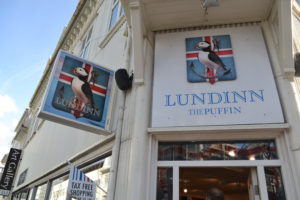
Seljalandsfoss
Next up is Seljalandsfoss, the second most famous waterfall after Skogafoss. A unique waterfall in the river Seljalandsá, about 30 km west from Skógar which is 60 meters high with a footpath behind it at the bottom of the cliff.
It is the only known waterfall of its kind, where it is possible to walk behind it, but be aware the path may be shut due to ice. Even in April when the weather was warming up, the footpath was closed. The waterfall is very picturesque and offers an opportunity for some amazing photos. Plus it’s right by the road so no detours taking you on a wild goose chase…
Skógafoss
After you’ve finished at Seljalandsfoss, not far along the road is Skógafoss. You must have been living under a rock for the last decade if you didn’t know about Skógafoss waterfall. The pictures are everywhere!
Situated on the Skógá River in the south of Iceland at the cliffs of the former coastline, Skógafoss is my all-time favourite waterfall from the trip, simply because you could really see it’s power as it fell from the 60-metre drop.
Skógafoss is one of the biggest waterfalls in Iceland, with a drop of 60 meters and a width of 25 meters, and you can walk right up to, but be prepared to be drenched, as we did. And if you can try head there early in the day so you miss the buses arriving!
We got there about 40 mins before everyone else arrived so managed to get some incredible photos! It is just overwhelming standing next to it – take your time to watch this immense natural wonder.
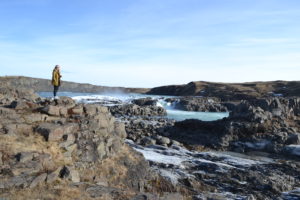
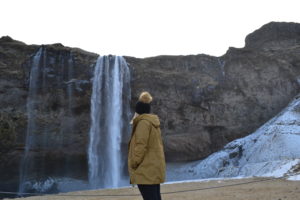

Solheimajokull Glacier
Then after an hour, you’ll pass by Solheimajokull Glacier on your left. Now, I am biased here because we didn’t do a tour at Solheimajokull Glacier, but I’ve heard they’re great, despite being expensive. Instead, we stopped off on our road trip of the south of the island and parked up.
We chucked on our hiking boots and went for a 15-minute walk up to the edge of the glacier, where you can see it in all its glory falling from the mountains, as it falls into the glacial lagoon. Don’t attempt to climb onto the glacier unguided as it is very dangerous.
Sólheimajökull is a glacier in southern Iceland, between the volcanoes Katla and Eijafjallajökkull. Solheimajokull glacier is an approximately 11-km-long outlet glacier, which advances from Myrdalsjokull glacier, down a one to two km wide valley.
The glacier falls from a height of about 1,300 m down to 100 m and, because of the location and shape of the glacier, it is sensitive to climate change. If the climate continues to warm, there is a possibility that the glaciers will have virtually disappeared in 100 to 200 years.
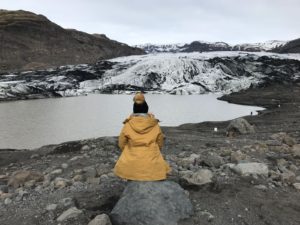
Sólheimasandur Plane Crash
Then literally across the road, you’ve got Sólheimasandur Plane Wreck. I’m sure you’ve seen photos before… every Instagrammer and their family has visited this wreck on the south coast. It’s a twisted wreckage from an old aeroplane crash on Sólheimasandur black sand beach.
If you don’t know where to look, it can be a difficult place to discover on your own, as it can’t be seen from the road and is actually around 45-60 minutes walk from the car park on the right-hand side of the road.
On Saturday Nov 24, 1973, a United States Navy Douglas Super DC-3 aeroplane was forced to land on Sólheimasandur’s black sand beach in the south of Iceland after experiencing some severe icing. Luckily all crew members survived the crash, but the aeroplane’s fuselage was abandoned.
The wings & tail are missing, it’s full of holes, and the crumbling fuselage is covered with wind-blown black sand. Now it’s become a photography dream location! Even Bieber filmed part of his latest music video skateboarding on top of the plane.
I have mixed opinions on whether this stop is worth it as its a super long walk, and it nearly killed me, but it is cool. So you decide, if you want a lengthy walk, do it. If you’d rather do something else, give it a miss!
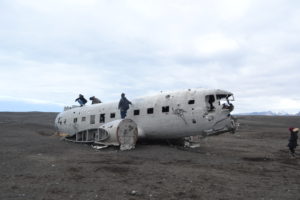
Black Sand Beach (Reynisfjara)
Next up, ranked one of the 10 most beautiful non-tropical beaches in the world in 1991, Black Sand Beach is beautiful. The lava beach of Reynisfjara is stunning and possibly one of the coolest beaches in the world with its black sand, insane basalt columns, lava formations, towering cliffs, gaping rock faces and caves galore.
Reynisfjara is found around 180 km from Iceland’s capital city, Reykjavik, and is a popular stop-off for those taking a sightseeing tour along South Coast. It was super busy when we arrived at around 2pm as the buses were there too, so pick a spot and grab a view of this amazing sight.
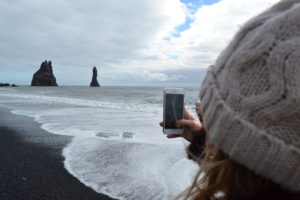
Visit the puffins at Dyrhólaey
Then around the corner of the bay, you’ve got Dyrhólaey, a small peninsula on the south coast of Iceland. The whole place is stunning with massive cliffs, volcanic arch, lighthouse and views of the coastline.
You can see puffins in the summer in Dyrhólaey so head here if you’re after a glimpse of one of Iceland’s most famous animals. The best experience is to leave your car in the parking lot at the bottom of the hill and go for a walk. You can also see Black Sand Beach from here and the basalt columns.
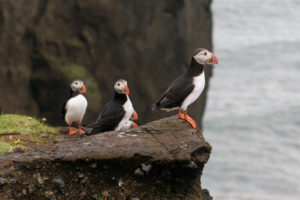
Dyrholaey Puffins | by mctrent Dyrholaey Puffins | by mctrent
Hveragerði Hot Springs
We actually stayed close to here so we didn’t go too far away from the hotel as we had our own hot springs in the hotel grounds, but we did go for a wander up to the top of the hills near Frost & Fire.
The Hveragerdi hot spring river trail is one of the most visited hiking trails in Iceland. The trail leads from the town of Hveragerdi to a geothermal river where you can bathe in warm water while admiring the astonishing Icelandic landscape.
The name of the valley, Reykjadalur, means Steam Valley and is filled with hot springs and mud pools, and there is even a hot river in which one can bathe! One to add to the list…
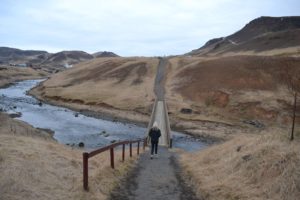
The Golden Circle
Gullfoss
Gullfoss, another famous waterfall, is located in the canyon of Hvítá river in southwest Iceland. Gullfoss is one of the most popular tourist attractions in Iceland with millions visiting this expansive waterfall each year.
The wide Hvítá river rushes southward, and about a kilometre above the falls it turns sharply to the right and flows down into a wide curved three-step “staircase” and then abruptly plunges in two stages (11 metres or 36 feet, and 21 metres or 69 feet) into a crevice 32 metres (105 ft) deep.
Together with Þingvellir and the geysers of Haukadalur, Gullfoss forms part of the Golden Circle, a popular day excursion for tourists in Iceland.
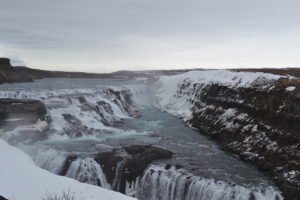
Geysir Hot Spring Area
Don’t be fooled by the Instagram photos, the great Geysir is not the only geyser in the Geysir hot spring area.
The most active geyser in the area is called Strokkur as it sprouts hot water as high as 30 meters into the air every few minutes or so, but the area as a whole is pretty cool, with small spring rivers running down the valley, smaller pools with bubbling brooks and an array of natural phenomena for you to see.
I would try and miss the crowds by visiting the early morning or late afternoon as it gets busy.
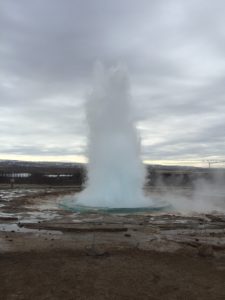
Kerið Crater
Kerið is a volcanic crater lake in Grímsnes, South Iceland, and is a great addition along Iceland’s world-famous Golden Circle route. Kerið is normally visited as an extra, and we hadn’t planned originally on stopping here, in addition to the famous Thingvellir National Park, Haukadalur Geothermal Valley and Gullfoss waterfall.
Kerið is a striking volcanic crater lake filled with milky blue-green water amid stark black and deep red slopes. Once believed to be an explosion crater formed 3,000 years ago, and last had a volcanic eruption more than 6,000 years ago. Kerid is 55 meters deep.
There is a path lining the rim for visitors to walk around and view the red and black slopes contrasting with the striking aquamarine water contributing to the otherworldly landscape. We visited here early morning around 9am and it was super quiet, only us and another couple here walking.
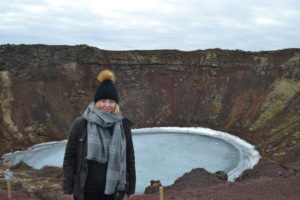
Laugarvatn Fontana
An alternative version to The Blue Lagoon, if you’re not bothered or you’ve done it before, is Laugarvatn Fontana. Here you can soak in the warm geothermal pools and get energized in the natural steam rooms, with the hot spring bubbling right below you.
Laugarvatn Fontana is located only one hour drive from Reykjavik, in the middle of the Golden Circle, on the black beach of beautiful Laugarvatn Lake.
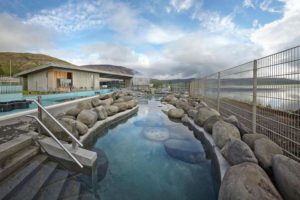
Þingvellir National Park
Thingvellir is a favourite stop among travellers along the Golden Circle route and has been one of Iceland’s most popular National Parks since 1930. It has also been named a World Heritage site by UNESCO in 2004.
It is said that Viking settlers arrived in the 10th century it was the site they chose as the meeting place of Althing. The Alþingi is the oldest surviving parliament in the world.
The park lies in a rift valley that marks the crest of the Mid-Atlantic Ridge and the boundary between the North American tectonic plate and the Eurasian. To its south lies Þingvallavatn, the largest natural lake in Iceland.
This is where tours for ‘Diving in Silfra’ take place. Diving is permitted in two submerged rifts in the National Park, Silfra and Davíðsgjá. Silfra is one of the best spots for diving in Iceland and many people find the rift unique on an international scale.
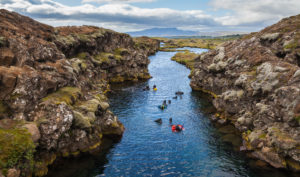
If you’re planning your own trip to Iceland, feel free to ask me any questions by tweeting me @sophiessuitcse or use the Google Map I created for our trip here.
My Travel Tips and Recommendations
Flights
To book flights, I always use flight search engine, Skyscanner, I regularly use the Everywhere tool to find the cheapest places to travel. It’s how I get to travel so much all around the world. I find it the easiest way to compare flight prices across airlines and get the best deals.
Accommodation
For accommodation, I usually book most of my hotels or hostels through Booking.com. I love using this platform as it provides me with some amazing deals for accommodation all around the world. Or if you prefer, I also recommend using Airbnb. If you haven’t signed up with Airbnb already, you can use this link to get £25 off your first visit!
Photography and Technology
Here is a list of the technology I always travel with:
Travel Insurance
Picking travel insurance that covers you in all eventualities is an essential part of planning a trip for every single person. If you can’t afford travel insurance, you can’t afford to travel. You never know what’s around the corner. World Nomads is an affordable option that I personally recommend. BOOK HERE
You can also find me on social media: Facebook, Twitter, YouTube and Instagram.
Sign up to AirBnB with this link and receive a £23 off your first booking.
To receive my articles and reviews straight to your inbox SUBSCRIBE HERE.
Did you know I also vlog my trips? Make sure you subscribe to my YouTube channel so you get alerted when all my travel videos goes live… CHECK THEM OUT HERE
Thank you for reading and as always happy adventuring! If you have any questions about the destination please leave these in the comments below.
If you’ve enjoyed this post, please share it for me with all your friends and family!
Sophie X

